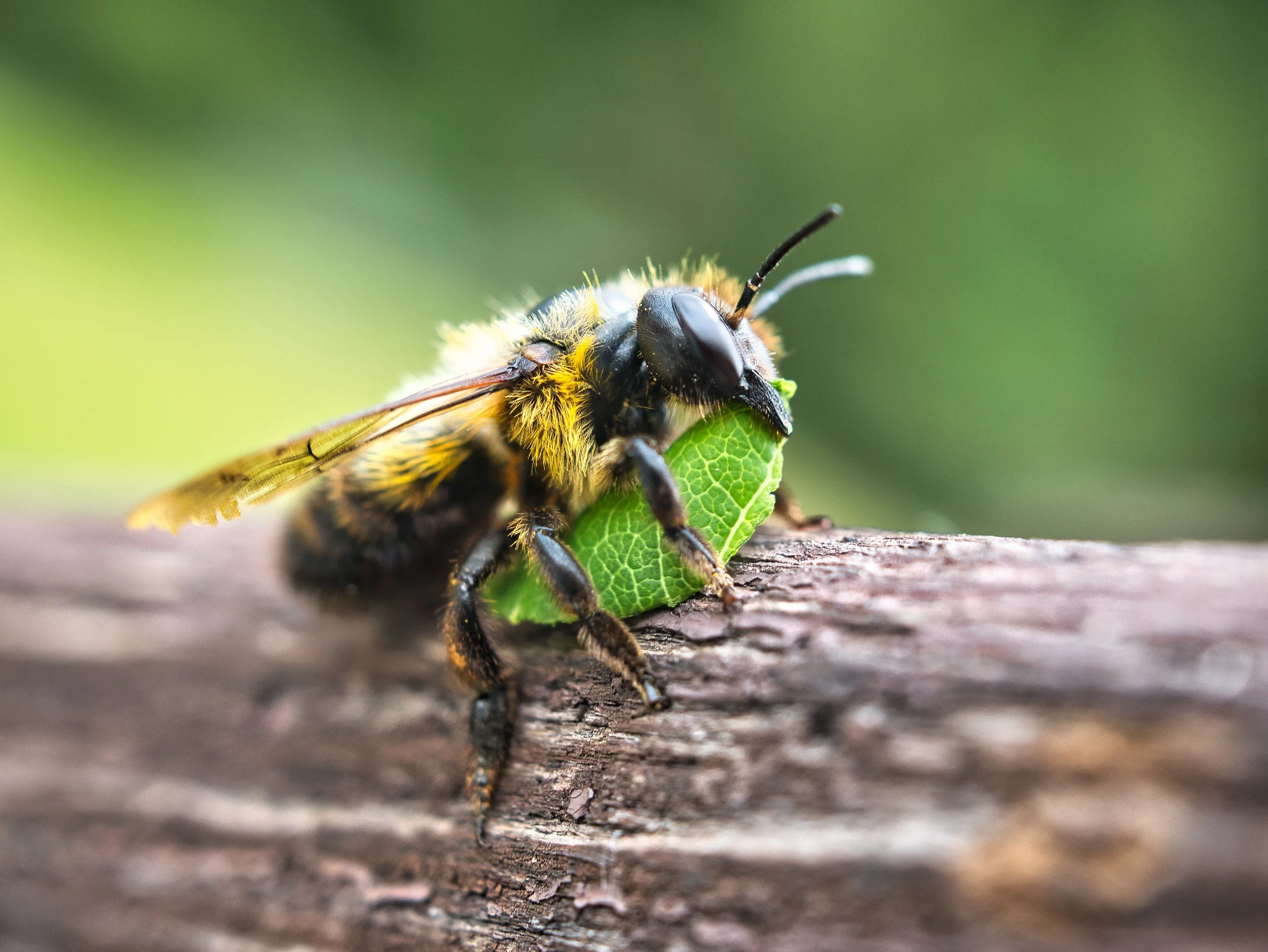LEAFCUTTER BEES: OUR MIDSUMMER POLLINATORS
Leafcutter bees
Latin Name -Megachilidae, Megachile
As mid-summer arrives in the northern hemisphere, the Leafcutter Bees emerge for their life cycle to begin. These unique pollinators help our gardens and yards by pollinating fruit TREES, carrots, blueberries, mints, peas, beans, dahlias and many different WILDFLOWERS and much more. They are generalists, meaning they will visit many different flowers, helping to pollinate our fruits, vegetables and flowers. Leafcutter bees are incredibly efficient at pollination, pollinating about 95% of the flowers they visit, compared to the 5% pollination rate of the honey bee.
Leafcutter bees are originally from SW Asia and NE Europe, they were naturalized in North America in the 1930s. There are over 4000 species of Megachilidae bees worldwide. In North America, there are 18 genera and over 600 species.
As a Solitary Bee species, meaning these bees live their life alone, not working together in a colony of bees. Each female is her own queen bee, she will build and tend to her own nest, forge for pollen and nectar, and raise their own brood (baby bees) with the help of mating with male Leafcutter bees.
They have a 4-6 week life span, in that time they will emerge, mate, forge for nectar and pollen, as well as build their nest out of leaves and flower petals to lay their brood (baby bees). They are cavity-nesting bees, meaning they will nest in holes, like the ones left behind by birds, animals and insects, they will nest in reeds and even in the ground. We can help them by providing nesting habitats as well, such as a bee block, reeds or tubes for them to nest in or even leaving a space in your yard or garden untended (leaving plant debris, not mowing, or cleaning up)
When Leafcutter bees build their nest they create individual pods for their baby bees to develop in, using leaves and flower petals to separate each egg. In each pod, there will be enough pollen and nectar stored for the larvae “baby” bee to develop into an adult bee.
The leaves and petals Leafcutter bees like to use to create each pod, are leaves and flower petals that are thin and have fewer veins, like the petals and leaves of a rose. Leafcutter bees will cut a round circle of leaf or petal to bring back to their home, once back they will chew around the edges to make the leaf/petal pliable to create each pod. The round circular cuts the Leafcutter bees leave behind do not harm the plant, like in the case of insects that infest a plant like some caterpillars or aphids.
After each queen Leafcutter bee has laid her eggs and finished her nest her life cycle comes to an end. Her brood (baby bees) with not emerge until the next summer. Leafcutter bees will over winter as larvae and will need time to mature into an adult bee the following summer. This maturation process takes around 4 weeks, with the weather being around 20°C/68°F. Once developed, the adult male bees will emerge first waiting for the female Leafcutter bees to emerge to mate and continue their cycle.
Questions To Contemplate—Do you have fruits and vegetables that could use the help of leafcutter bees? Have you noticed any round cuts in your leaves or flower petals? Or have you noticed a cute little bee flying around with a piece of leaf in its mouth?

